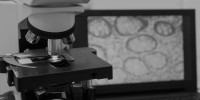
New Computational Method Maps Human Tissue
Researchers at Weill Cornell Medicine have developed a computational method that can map the architecture of human tissues in greater detail than ever before. This approach is expected to accelerate studies of cellular interactions at the organ level and could enable powerful new diagnostic strategies for a variety of different diseases.
In order to bridge the gap between classical microscopy and modern single-cell molecular analysis, they developed an approach to identify and quantify microanatomical tissue structures in multiplexed images without human intervention.
What’s it all about? Their method, unsupervised discovery of tissue architecture with graphs (UTAG), combines information on cellular morphology and expression with the physical proximity of cells to accurately identify organ-specific microanatomical domains in healthy and diseased tissue.
 We apply our method to various types of images across healthy and disease states to show that it can consistently detect higher-level architectures in human tissues, quantify structural differences between healthy and diseased tissue, and reveal tissue organization patterns at the organ scale.
We apply our method to various types of images across healthy and disease states to show that it can consistently detect higher-level architectures in human tissues, quantify structural differences between healthy and diseased tissue, and reveal tissue organization patterns at the organ scale.
Possibilities and advantages at a glance
UTAG manages to recognize tissue architecture and can be used to quantify biologically relevant processes such as angiogenesis in native tissue conformation and their extent in individual samples. While other computational methods based on genomics and transcriptomics can do this as well, UTAG offers the advantage of directly observing the manifestation of biological processes in the native physical context of the tissue.
This new computational method could thus represent a major step toward the systematic discovery of tissue structures. However, for successful application, the identity and biological relevance of the discovered topological domains still need to be verified or interpreted.
Check out Weill Cornell Medicine’s newsroom or read the researchers’ article in the nature methods magazine: https://www.nature.com/articles/s41592-022-01657-2